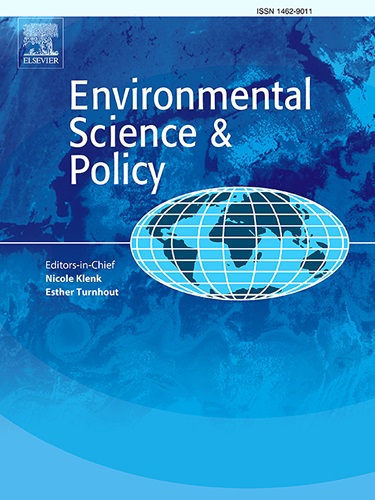越南湄公河三角洲适应战略与当前气候和环境变化的一致性如何:系统回顾
IF 4.9
2区 环境科学与生态学
Q1 ENVIRONMENTAL SCIENCES
引用次数: 0
摘要
人口稠密的越南湄公河三角洲(VMD)是全球第三大三角洲,在区域和全球粮食安全方面发挥着至关重要的作用。然而,近几十年来,由于全球气候变化和人类活动在湄公河流域及其上游流域的复杂相互作用,湄公河流域经历了重大的气候和环境变化。最近的科学研究表明,这些变化的快速演变和量化表明,在不久的将来,这些变化将继续发生实质性的变化,对三角洲的可持续性构成严重威胁。鉴于这些环境转型的紧迫性,有必要评估当前的气候适应政策和三角洲发展计划在多大程度上整合了有关环境变化和未来轨迹的最新科学知识。为了评估影响三角洲发展的科学知识和现行政策指令之间的一致性,我们对27个现有的三角洲适应计划和/或战略进行了系统回顾。本文还对五个被认为是海平面相对上升和海水入侵热点省份的项目进行了考察,并对各种关键政策和适应计划的演变轨迹进行了分析,为了解它们对三角洲的历史影响提供了有价值的见解。我们发现,虽然大多数文件承认气候变化的现实,但它们往往缺乏对其环境影响的哪些方面进行处理的清晰度。主要的焦点往往是与盐水入侵、洪水和季节性淹没有关的问题,而加速地面沉降和随之而来的相对海平面上升所构成的生存威胁相对较少受到关注。此外,沉积物匮乏(尤其是采砂)在加剧VMD河口系统盐水入侵方面的重要作用在很大程度上被忽视了。我们的研究结果表明,最受关注的气候和环境压力通常是那些对三角洲人口和生计产生明显、直接和基于事件的影响的压力。然而,这些压力往往是潜在的、不断升级的长期过程的症状,例如地面沉降或沉积物饥饿,而目前的政策指导文件和适应计划没有充分解决这些问题。忽视这些潜在的生存环境压力,不仅会导致在当前的三角洲发展中错失适应和缓解的机会,而且还会危及三角洲的长期可持续性。本文章由计算机程序翻译,如有差异,请以英文原文为准。
How consistent are adaptation strategies with ongoing climatic and environmental changes in the Vietnamese Mekong Delta: A systematic review
The densely populated Vietnamese Mekong Delta (VMD), the third-largest delta globally, plays a vital role in regional and global food security. However, it has undergone significant climatic and environmental changes over recent decades, driven by intricate interactions between global climate change and human activities within the VMD and its upstream river basin. The rapid evolution and quantification of these changes, as evidenced by recent scientific studies, suggest continued and substantial alterations in the near future, posing a serious threat to the delta's sustainability. Given the urgency of these environmental transformations, it is imperative to evaluate the extent to which current climate adaptation policies and delta development plans integrate state-of-the-science knowledge on environmental changes and future trajectories. To assess the coherence between scientific knowledge and prevailing policy directives shaping delta development, we conducted a systematic review of 27 existing adaptation plans and/or strategies for the VMD. This review, supplemented by an examination of projects in five provinces identified as hotspots for relative sea-level rise and saltwater intrusion, is enriched by an analysis of evolutionary trajectories of various key policies and adaptation plans over time, offering valuable insights into their historical influence on the delta. We found that while most documents acknowledge the reality of climate change, they often lack clarity regarding which dimensions of its environmental effects are addressed. The predominant focus tends to be on issues related to saltwater intrusion, floods, and seasonal inundation, whereas the existential threat posed by accelerating land subsidence and consequent relative sea-level rise receives comparatively less attention. Moreover, the significant role of sediment starvation, particularly due to sand mining, in exacerbating saltwater intrusions in the VMD’s estuary system is largely overlooked. Our results show that the climatic and environmental pressures garnering the most attention are typically those resulting in obvious, direct, and event-based impacts on the delta's population and livelihoods. However, these pressures often serve as symptoms of underlying, steadily escalating, longer-scale processes, such as land subsidence or sediment starvation, which are inadequately addressed in current policy steering documents and adaptation plans. Neglecting these potentially existential environmental pressures not only leads to missed opportunities for adaptation and mitigation in current delta development but also jeopardizes the delta's long-term sustainability.
求助全文
通过发布文献求助,成功后即可免费获取论文全文。
去求助
来源期刊

Environmental Science & Policy
环境科学-环境科学
CiteScore
10.90
自引率
8.30%
发文量
332
审稿时长
68 days
期刊介绍:
Environmental Science & Policy promotes communication among government, business and industry, academia, and non-governmental organisations who are instrumental in the solution of environmental problems. It also seeks to advance interdisciplinary research of policy relevance on environmental issues such as climate change, biodiversity, environmental pollution and wastes, renewable and non-renewable natural resources, sustainability, and the interactions among these issues. The journal emphasises the linkages between these environmental issues and social and economic issues such as production, transport, consumption, growth, demographic changes, well-being, and health. However, the subject coverage will not be restricted to these issues and the introduction of new dimensions will be encouraged.
 求助内容:
求助内容: 应助结果提醒方式:
应助结果提醒方式:


